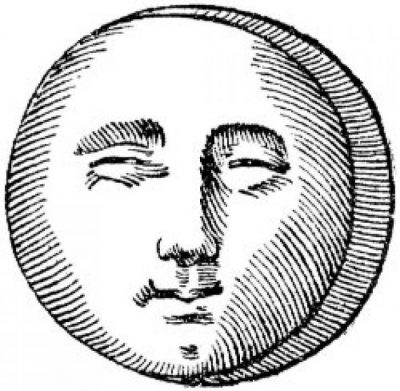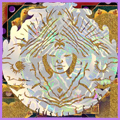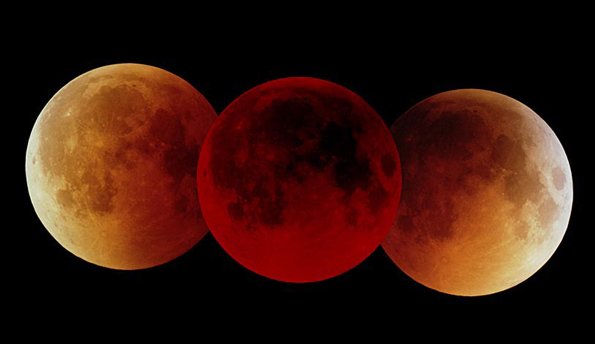
Sagrada Familia Staircase Barcelona
In view of the present retrogradation of Mercury in Libra (September 17 to October 9 2015) I’m re-posting here an edited version of a post I published in 2011, on the general subject of retrogradation. stressing in particular the significance of Mercury when retrograde.
Click here for my recent post on the September 2015 Mercury retrograde period.
The retrogradation of Mercury is a mystery and you are the only one who can unravel it!
In fact each Birth Chart will experience this phase in its own peculiar way. There is no given formula for the way Mercury Retrograde is going to impact on your life.
Lately I have reflected upon and researched a lot the phenomenon of retrogradation, this optical illusion that, at regular interval, makes the planets appear to stop in their tracks, and then move for a while in the opposite direction of the one they normally travel on.
In real terms the planets of course never moves backward. From a sun centered (heliocentric) viewpoint they all travel at their appointed speed, always in the same direction, identical to planet Earth’s.
The phenomenon appears instead very ‘real’ from our Earth’s plane. With long exposure photography we are now able to actually see the shiny loop the planet’s course makes when retrograde.
Too often Retrogradation is accepted as part of the astrological tradition, and not given much thought or meaning.
This cyclical phenomenon appeared instead positively magical to the ancient sky-watchers, who eagerly awaited it, calculated its timing and duration and attributed to it great significance, in forecasting future events, in accordance with the nature of the planet involved.
Modern astrologers don’t need any more to search the sky for signs, to wait to see a star or planet rising before the Sun. Cyber-planetariums and astrological software are all we need to practice our Art.
Thanks to technology we have the tools now to cast many horoscopes in record time, using the most sophisticated techniques ever, but we have also lost the ‘real’ magic of the night sky and twilight hours, the eternally returning cycles of the wandering planets, a vital dimension of the ancient wisdom tradition.
Understanding better what happens during a planet’s retrograde period and putting that particular period within the context of the planet’s whole cycle can help us to recapture some of its true meaning.
Every cycle in nature and therefore in the psyche of man can be conceived as having two halves or hemicycles, one of involution and one of evolution, a Yin and a Yang phase. The place where Yin and Yang meet is the matrix of each cycle, while the place of their maximum separation is the climax of each cycle. So we have a Waxing Phase, from matrix to climax, and a Waning Phase, from climax to matrix, in an eternal round. This specific rhythm permeates everything, all living beings, all experiences. The planets are no different. They too obey the inner order of things, and therefore follow a clear path of Ascent and Descent when viewed from the Earth’s plane.
The Moon is not the only celestial body to show phases, all planets do, each in its own peculiar way. Retrogradation has a lot to do with those phases.
I’m using Mercury here as an example of what retrogradation entails. Mercury is the planet that goes retrograded more often than any other, three or four times a year.
Each Planet is different in fundamental ways from all others, even with regard to their retro periods, but the underlying Waxing/Waning tempo is basically the same for all.
Mercury, from Evening to Morning Star
Often the period of Mercury’s retrogradation is simply interpreted as a time full of misunderstandings, technical glitches, disruption in communication, odd accidents, etc. These effects are often obvious indeed, especially for people who happen to have the Sun, Moon, Planets or their Birth Chart’s Angles (Ascendant, etc.) within the span of the zodiac covered by Mercury.
When we attempt to interpret Mercury in a Birth Chart we tend to take its position (and that of all other celestial bodies) as fixed, a point in a linear, perhaps circular universe, in which Sun, Moon and Planets interact by angular relationship with each other, as in a neat example of cosmic geometry. We tend however to exclude from our interpretation the actual experience of Mercury as it manifests on our Earth plane.
We may learn from text books that Mercury’s orbit around the Sun in just less than three months (88 days), but the experience we have of the twinkling star that is Mercury to our unaided eyes is indeed very different. The visual cycle of Mercury lasts in fact 116 days (a bit less than four months), during which time this Planet, from our view point, appears to wax and wane.
In the light of the entire cycle the Retrogradation of Mercury is a most significant moment. During this special time the planet passes from waning to waxing, from Evening to Morning Star. This is not only a miracle to the beholder, seeing Mercury disappearing behind the Sun and then re-appearing on the other side, but a real shift of our awareness of the planet’s energy.
The retro period of any planet, like the dark three days of the New Moon, is a twilight status, like the one in between sleeping and wakening. We take usually a little while to wake up completely after a deep sleep. In real life as well as symbolically the in-between waking and sleep phase is all important because it is then that our creative imagination provides the most fertile ground for new insights.
Ten to fifteen days after the beginning of its retro motion Mercury becomes completely immersed in the light of the Sun, which has, in the mean time, caught up with it, due to its slowness. It is of course the Earth that is actually accelerating on Mercury, amounting to the same visual effect. The date of this all important conjunction for the upcoming cycle is October 1, 2015. At first will be a tentative beginning, when the new impulse is guided by yet unclear urges, stemming from the past while longing for the future.
Mid-way through its retro period, Mercury is as close to planet Earth than it will ever be, orbiting directly between us and the Sun disk. This conjunction of Mercury to the Sun is known as the Inferior Conjunction, to distinguish it from the Superior Conjunction when Mercury is as far from Earth as it can possibly be and also disappear in the glare of the Sun, being visually just behind the Sun from our observation point on Earth. The Superior conjunction is really an opposition Mercury-Earth in a heliocentric view. The next Superior Conjunction will occur on November 17, and will represent the culmination of the cycle that starts in October.
The phases bring to the ‘reading’ of Mercury an extra dimension, showing it as an ongoing process, rather than a fixed placement to be interpreted in a rigid way.
In this new light the Retrogradation of Mercury stands for a sort of preparatory period during which the lesson of the last mercurial cycle is appreciated and we look back in order to understand and re-value, before a new cycle can begin in a conscious way, when Mercury turns direct on October 1.
I hope that, if you didn’t know these facts already, you may feel better equipped now to answer your skeptic friends when they tell you that retrogradation is just an optical illusion and non existent. Something really happens to the relationship between the Earth and the planet when this appears to move in a backward fashion.
The astrological meaning of the Retrogradation of Mercury
All planets’ retro periods represent a revaluation of sort, but what we need to reflect upon differs in accordance with the nature of the planet. So, for instance, during the retrogradation of Mars we need to re-value and re-consider the way we assert ourselves and go out to get what we want from life. This need of self-reflection could make this an ineffectual and tentative period, when for a time we may lose confidence, becoming less able to interact constructively with our environment. At the end we will have gained however a deeper understanding of what need changing in our attitude in order to achieve a less confrontational and more effective method of proceeding.
During the retrogradation of Venus the same thing happens to our feelings. We are inclined to reflect on the way we usually relate to others, especially in a one to one situation. For a time this could mean that we become more tentative when we relate to others, less outgoing, more introspective, not the best social time. But at the end of this tunnel too we may have discovered things about ourselves and our loved ones that can help immensely in healing rifts or deciding the fate of shaky or unsatisfactory relationships.
It is the same with Mercury. Its Evening Star incarnation (spanning in the second half of 2015 from July 23 = Superior Conjunction to the Sun, to October 1 = Inferior Conjunction to the Sun), represents a time for giving due consideration to the way we communicate our thoughts and ideas to others, the way we tackle intellectual challenges, like writing, reading, studying, teaching. In particular the retro motion of Mercury (September 17 to October 9) corresponds to a period of mental introspection, at the end of which we can start again to project our minds onto the world, with renewed inventiveness and adaptability to different circumstances and people.
In the Morning Star phase Mercury’s direct energy does in fact facilitate everything mercurial, such as change, communication, expression of idea in speech or writing, travel, brain-storming, moving etc. This is a forward looking mental impulse, bringing us out of ourselves and onto active participation with the world. This period will end with the Superior Conjunction on November 17, when our mental tendencies will have reached their more concrete and objective state. From then Mercury will begin to wane again, arriving at its next retro Station in Aquarius on January 5 2016.
To discover which phase Mercury was going through at the time of your birth all you need to do is look for its position relative to the Sun. When Mercury is behind the Sun in longitude it appears as the Morning Star, displaying an outgoing type of energy, eager for self expression. When Mercury instead is found to be ahead of the Sun in longitude it appears as the Evening Star, directing its mental energy inward, aiding insight and introspection.


















































Recent Comments